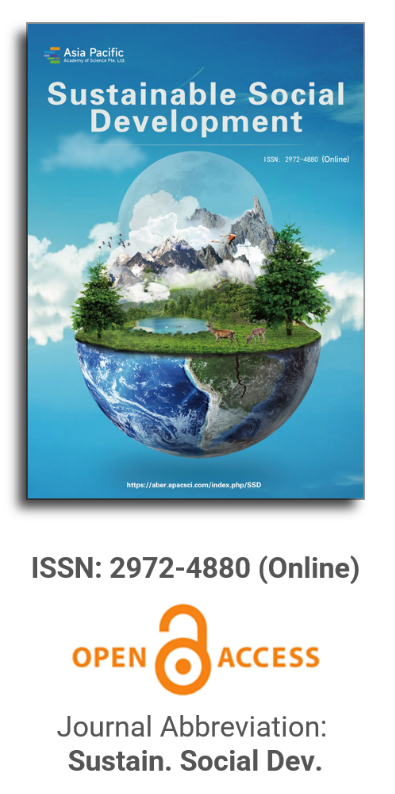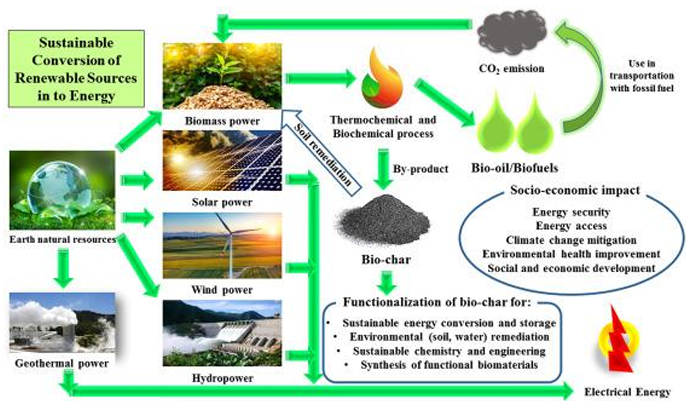
Asia Pacific Academy of Science Pte. Ltd. (APACSCI) specializes in international journal publishing. APACSCI adopts the open access publishing model and provides an important communication bridge for academic groups whose interest fields include engineering, technology, medicine, computer, mathematics, agriculture and forestry, and environment.

A survey of sustainable development of intelligent transportation system based on urban travel demand
Vol 2, Issue 1, 2024
Download PDF
Abstract
This paper provides a comprehensive exploration of urban travel demand forecasting and its implications for intelligent transportation systems, emphasizing the crucial role of intelligent transportation systems in promoting sustainable urban development. With the increasing challenges posed by traffic congestion, environmental pollution, and diverse travel needs, accurate prediction of urban travel demand becomes essential for optimizing transportation systems, fostering sustainable travel methods, and creating opportunities for business development. However, achieving this goal involves overcoming challenges such as data collection and processing, privacy protection, and information security. To address these challenges, the paper proposes a set of strategic measures, including advancing intelligent transportation technology, integrating intelligent transportation systems with urban planning, enforcing policy guidance and market supervision, promoting sustainable travel methods, and adopting intelligent transportation technology and green energy solutions. Additionally, the study highlights the role of intelligent transportation systems in mitigating traffic congestion and environmental impact through intelligent road condition monitoring, prediction, and traffic optimization. Looking ahead, the paper foresees an increasingly pivotal role for intelligent transportation systems in the future, leveraging advancements in deep learning and information technology to more accurately collect and analyze urban travel-related data for better predictive modeling. By combining data analysis, public transportation promotion, shared travel modes, intelligent transportation technology, and green energy adoption, cities can build more efficient, environmentally friendly transportation systems, enhancing residents’ travel experiences while reducing congestion and pollution to promote sustainable urban development. Furthermore, the study anticipates that intelligent transportation systems will be intricately integrated with urban public services and management, facilitating efficient and coordinated urban functions. Ultimately, the paper envisions intelligent transportation systems playing a vital role in supporting urban traffic management and enhancing the overall well-being of urban construction and residents’ lives. In conclusion, this research not only enhances our understanding of urban travel demand forecasting and the evolving landscape of intelligent transportation systems but also provides valuable insights for future research and practical applications in related fields. The study encourages greater attention and investment from scholars and practitioners in the research and practice of intelligent transportation systems to collectively advance the progress of urban transportation and sustainable development.
Keywords
References
1. Teusch J, Gremmel JN, Koetsier C, et al. A systematic literature review on machine learning in shared mobility. IEEE Open Journal of Intelligent Transportation Systems. 2023; 4: 870-899. doi: 10.1109/ojits.2023.3334393
2. Zhu J, Xie N, Cai Z, et al. A comprehensive review of shared mobility for sustainable transportation systems. International Journal of Sustainable Transportation. 2022; 17(5): 527-551. doi: 10.1080/15568318.2022.2054390
3. Xu M, Di Y, Yang H, et al. Multi-task supply-demand prediction and reliability analysis for docked bike-sharing systems via transformer-encoder-based neural processes. Transportation Research Part C: Emerging Technologies. 2023; 147: 104015. doi: 10.1016/j.trc.2023.104015
4. Chen J, Chen Y. The study on the influence of highway transportation on regional economic development. In: Striełkowski W, Black JM, Butterfield SA, et al. (editors). Advances in Social Science, Education and Humanities Research, Proceedings of the 5th International Education, Economics, Social Science, Arts, Sports and Management Engineering Conference (IEESASM 2017); 28–29 December 2017; Qingdao, China. Volume 179. pp. 360–364. doi: 10.2991/ieesasm-17.2018.74
5. Chaudhuri R, Chatterjee S, Ghosh A, et al. Sustainable innovation for shared mobility: Contextual and consumer factors of an Indian car subscription business model. International Journal of Entrepreneurial Behavior & Research. 2022; 31(2/3): 344-368. doi: 10.1108/ijebr-01-2022-0090
6. Hansen T, Sener IN. Strangers on this road we are on: A literature review of pooling in on-demand mobility services. Transportation Research Record. 2022; 2677(3): 1368-1381. doi: 10.1177/03611981221123801
7. Gao W, Hu X, Wang N. Exploring spatio-temporal pattern heterogeneity of dockless bike-sharing system: Links with cycling environment. Transportation Research Part D: Transport and Environment. 2023; 117: 103657. doi: 10.1016/j.trd.2023.103657
8. Hu JW, Creutzig F. A systematic review on shared mobility in China. International Journal of Sustainable Transportation. 2021; 16(4): 374-389. doi: 10.1080/15568318.2021.1879974
9. Xu L, Pan S, Xia L, et al. Molecular Property Prediction by Combining LSTM and GAT. Biomolecules. 2023; 13(3): 503. doi: 10.3390/biom13030503
10. Castellanos S, Grant-Muller S, Wright K. Technology, transport, and the sharing economy: Towards a working taxonomy for shared mobility. Transport Reviews. 2021; 42(3): 318-336. doi: 10.1080/01441647.2021.1968976
11. Mnyakin M. Applications of AI, IoT, and Cloud computing in smart transportation: A review. Artificial Intelligence in Society. 2023; 3(1): 9-27.
12. Rashid M, Elfouly T, Chen N. A comprehensive survey of electric vehicle charging demand forecasting techniques. IEEE Open Journal of Vehicular Technology. 2024; 5: 1348-1373. doi: 10.1109/ojvt.2024.3457499
13. Biswas B, Sanyal MK, Mukherjee T. AI-based sales forecasting model for digital marketing. International Journal of E-Business Research. 2023; 19(1): 1-14. doi: 10.4018/ijebr.317888
14. Wu B, Wang L, Zeng YR. Interpretable tourism demand forecasting with temporal fusion transformers amid COVID-19. Applied Intelligence. 2023; 53(11): 14493-14514. doi: 10.1007/s10489-022-04254-0
15. Harikrishnakumar R, Nannapaneni S. Forecasting bike sharing demand using quantum Bayesian network. Expert Systems with Applications. 2023; 221: 119749. doi: 10.1016/j.eswa.2023.119749
16. Yuan H, Li G. A Survey of Traffic Prediction: from Spatio-Temporal Data to Intelligent Transportation. Data Science and Engineering. 2021; 6(1): 63-85. doi: 10.1007/s41019-020-00151-z
17. Kim E, Helal S, Cook D. Human Activity Recognition and Pattern Discovery. IEEE Pervasive Computing. 2010; 9(1): 48-53. doi: 10.1109/mprv.2010.7
18. Karthika K, Nithya A, M S, et al. Advancing bike sharing security with SVM and IoT-enabled tracking and anti-theft measures. In: Proceedings of the 2024 2nd International Conference on Sustainable Computing and Smart Systems (ICSCSS); 2024.
19. Rossetti T, Broaddus A, Ruhl M, et al. Commuter preferences for a first-mile/last-mile microtransit service in the United States. Transportation Research Part A: Policy and Practice. 2023; 167: 103549. doi: 10.1016/j.tra.2022.11.009
20. Huang L, Xie G, Zhao W, et al. Regional logistics demand forecasting: A BP neural network approach. Complex & Intelligent Systems. 2021; 9(3): 2297-2312. doi: 10.1007/s40747-021-00297-x
21. Fleischmann J, Hanicke M, Horetsky E, et al. Battery 2030: Resilient, sustainable, and circular. Available online: https://www.mckinsey.com/industries/automotive-and-assembly/our-insights/battery-2030-resilient-sustainable-and-circular#/ (accessed on 5 January 2024).
22. Xia L, Xu L, Pan S, et al. Drug-target binding affinity prediction using message passing neural network and self supervised learning. BMC Genomics. 2023; 24: 557. doi: 10.1186/s12864-023-09664-z
23. Montanino M, Monteil J, Punzo V. From homogeneous to heterogeneous traffic flows: LpString stability under uncertain model parameters. Transportation Research Part B: Methodological. 2021, 146: 136-154. doi: 10.1016/j.trb.2021.01.009
24. Zhong S, Liu A, Jiang Y, et al. Energy and environmental impacts of shared autonomous vehicles under different pricing strategies. npj Urban Sustainability. 2023; 3: 8. doi: 10.1038/s42949-023-00092-2
25. Pan S, Xia L, Xu L, et al. SubMDTA: drug target affinity prediction based on substructure extraction and multi-scale features. BMC Bioinformatics. 2023; 24: 334. doi: 10.1186/s12859-023-05460-4
26. Tian C, Fei L, Zheng W, et al. Deep learning on image denoising: An overview. Neural Networks. 2020; 131: 251-275. doi: 10.1016/j.neunet.2020.07.025
27. Ye R, Xu Z, Pang J. DDFM: A novel perspective on urban travel demand forecasting based on the ensemble empirical mode decomposition and deep learning. In: Proceedings of the ICBDT 2022: 2022 5th International Conference on Big Data Technologies; 23–25 September 2022; Qingdao, China. pp. 373–379. doi: 10.1145/3565291.3565351
Supporting Agencies
Copyright (c) 2024 Hongyu Yan, Zhiqiang Lv
License URL: https://creativecommons.org/licenses/by/4.0

This site is licensed under a Creative Commons Attribution 4.0 International License (CC BY 4.0).

Prof. Kittisak Jermsittiparsert
University of City Island, Cyprus






It is with deep regret that we announce the cancellation of the Forum on Sustainable Social Development & Computing and Artificial Intelligence, originally scheduled for June 15, 2025.

